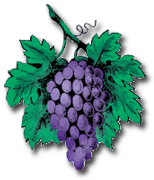Ci scusiamo. Al momento non è disponibile alcuna traduzione italiana per questa pagina.
Internet: America’s young people discover Italy through Italy4Kids
Italy told to American children and students to bring them closer to learning Italian language and culture: this is the objective of Italy4Kids, the online interactive portal created by the Embassy of Italy in Washington that makes it possible for young people from 5 to 18 to access all sorts of information about our country through videos, quiz, and games, as well as Twitter and Facebook.
Launched on the eve of the eleventh edition of Italian Language Week in the world, Italy4Kids – available at <www.ambwashingtondc.esteri.it> – is intended as an interactive and easy to use learning tool. Even the youngest internet navigators can play games that will allow them to explore Italy’s regions, design an “Italian itinerary” in Washington DC’s museums and public spaces and discover the bonds between Italy and the United States. In this way, e.g., a 6-7 year old can learn to count to ten in Italian while an older child can get information on the AP in Italian.
“New technologies and social media allow us to open the doors of our Embassy and country to thousands of students who want to know more about Italy and are growing more and more interested in learning Italian,” says Ambassador of Italy to the USA Giulio Terzi, who also notes that the initiative will reach an audience of future tourists and clients of ‘Made in Italy’.
— Press & Public Affairs Office, Embassy of Italy
 My grandfather made homemade wine, and so did many Italian immigrants who came to the United States. It was a great tradition, and many people will tell you great stories about the annual fall event.
My grandfather made homemade wine, and so did many Italian immigrants who came to the United States. It was a great tradition, and many people will tell you great stories about the annual fall event. Florentine children sing this song as they wander through the streets of Florence the first week of September, carrying papier-mâché lanterns tied to the ends of sticks, called rificolone. There are several theories as to where the tradition originates from, some think it commemorates the triumphant entry of Florentine troops into Siena on August 2 1555, when the soldiers tied lanterns onto the ends of their pikes.
Florentine children sing this song as they wander through the streets of Florence the first week of September, carrying papier-mâché lanterns tied to the ends of sticks, called rificolone. There are several theories as to where the tradition originates from, some think it commemorates the triumphant entry of Florentine troops into Siena on August 2 1555, when the soldiers tied lanterns onto the ends of their pikes. Victor Gugliuzza, affectionately known to many in IFAFA as one of “the Victors” along with his long-time companion Victor Peck, was born Victory Roy Gugliuzza in 1921. He grew up with two sisters and a brother, all of whom predeceased him.
Victor Gugliuzza, affectionately known to many in IFAFA as one of “the Victors” along with his long-time companion Victor Peck, was born Victory Roy Gugliuzza in 1921. He grew up with two sisters and a brother, all of whom predeceased him. Joe Bentivegna was a long-time member and supporter of IFAFA. He was born in Dunmore, PA, and passed away at his home in Loretto, PA.
Joe Bentivegna was a long-time member and supporter of IFAFA. He was born in Dunmore, PA, and passed away at his home in Loretto, PA.